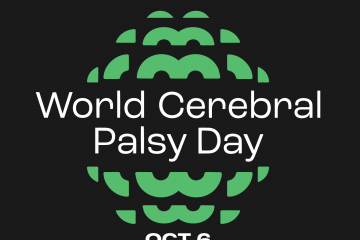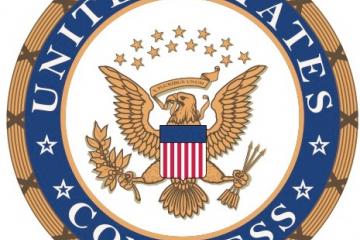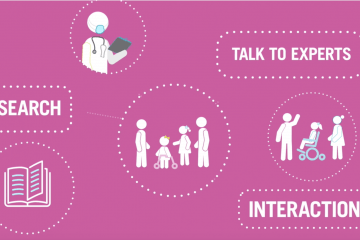Improving Cerebral Palsy Outcomes through Advocacy: A Journey of Persistence, Progress, and Possibility
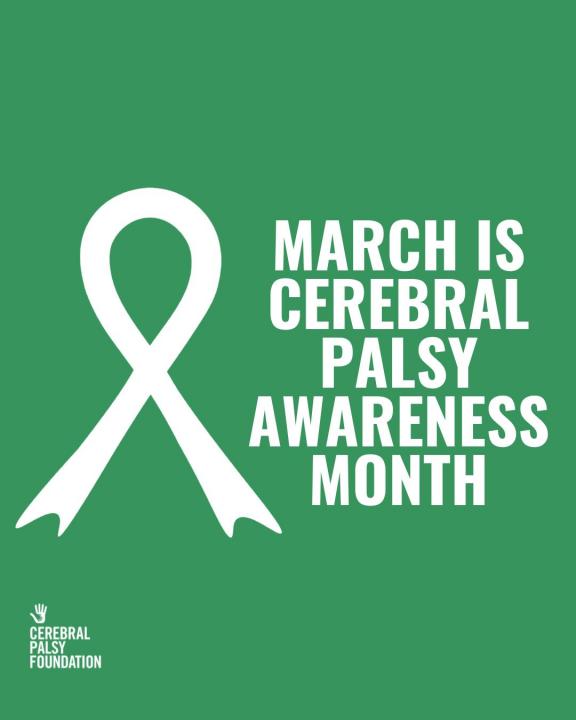
Since 2005, the Cerebral Palsy (CP) community has made significant strides in advocating for federally funded cerebral palsy research, addressing an important public health issue.
Cerebral palsy is the most common lifelong motor disability, affecting more than 1 million Americans and more than 17 million people worldwide, as well as their families. Despite its prevalence, cerebral palsy research has historically been vastly underfunded and under-prioritized in the United States and around the world. Until 2004, no organized, community-based advocacy efforts existed to increase federal investment in cerebral palsy research.
The past two decades have marked a turning point in positive change and momentum due to the mobilization of the cerebral palsy community. Parents, healthcare professionals, researchers, people with CP, and policymakers have come together to advocate for answers to basic questions about cerebral palsy's causes, treatments, prevention, and potential cures. This collaboration has begun to transform cerebral palsy advocacy into a robust and effective movement, laying the foundation for a brighter future for millions of individuals living with CP. Much more work, however, remains to be done to transform lives and futures.
WHY IS ADVOCACY IS NECESSARY TO IMPROVE CEREBRAL PALSY HEALTHCARE AND OUTCOMES?
Speaking up on behalf of improved cerebral palsy healthcare and increased research investment by the cerebral palsy community is critical to better pathways to improved cerebral palsy prevention, earlier detection, better treatments with effective standards of care, and potential cures for many kinds of cerebral palsy that we know are possible. Together, we have begun to raise public awareness, and influence policy, leading to substantial advancements. These efforts give the cerebral palsy community a voice, and more actively participate in decisions affecting their health and well-being.
1. Awareness: Advocacy raises public awareness about specific health conditions, leading to increased understanding and support.
2. Policy Change: Through advocacy, the cerebral palsy community can influence policymakers to implement changes that improve healthcare access, funding, and resources.
3. Research and Funding: Advocacy can drive funding for cerebral palsy research investment into more effective treatments, better healthcare across the lifespan and potential cures.
4. Community Building: Advocacy helps unite us through shared experiences, fostering support networks and collective community strength.
5. Education: Effective advocacy better educates both the public and healthcare professionals about cerebral palsy, improving outcomes and reducing stigma.
BUILDING PARTNERSHIPS: FAMILIES, STAKEHOLDERS AND PROFESSIONALS
Partnering with the American Academy for Cerebral Palsy and Developmental Medicine (AACPDM) played an early important role in advancing advocacy for cerebral palsy research. The AACPDM's mission is to provide multidisciplinary scientific education and promote excellence in research and services for people with cerebral palsy and related disabilities. In 2005, the AACPDM established an advocacy committee to inform and educate its members on how to become effective advocates for research, healthcare, and related issues.
However, the AACPDM soon discovered that family-led advocacy groups were already leading the charge. This realization led to a powerful partnership between healthcare professionals and families, initiating successful advocacy efforts in the cerebral palsy community.
Family and community leadership has long been a driving force in research advocacy for people with disabilities. In the 1940s, families of children with cerebral palsy founded United Cerebral Palsy (UCP), one of the first non-profit organizations dedicated to improving the lives of individuals with CP. The research arm of the original UCP was established and spun off as a separate entity. This research entity was active in championing a variety of cerebral palsy prevention breakthroughs, and was later renamed the Cerebral Palsy Foundation. For the past 70 years, the Cerebral Palsy Foundation has collaborated with stakeholders, physicians, researchers, and decision makers to advance research and awareness.
Reaching for the Stars (RFTS), founded in 2005 by parents Cynthia Frisina and Anna Marie Champion, spearheaded early initiatives to increase federal research funding, improve treatment options, and educate families about cerebral palsy. RFTS merged with the Cerebral Palsy Foundation in 2019, cementing leadership in CP legislative advocacy on behalf of the cerebral palsy community and stakeholders.
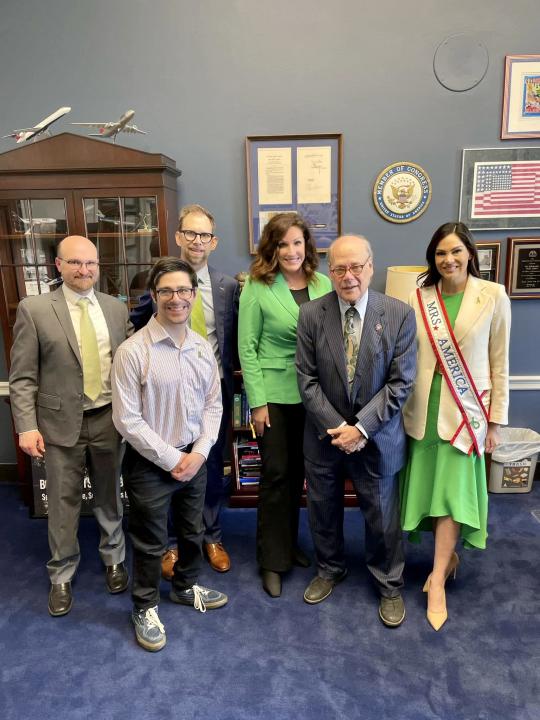
CEREBRAL PALSY LEGISLATIVE ADVOCACY MILESTONES: A TIMELINE OF PROGRESS
Advocacy for cerebral palsy research has achieved significant milestones over the past 20 years - although there is much more to do and accomplish. These milestones highlight the power of collaboration and the importance of sustained efforts to influence policy and funding priorities, and build upon those who have come before advocating for the ADA and a variety of landmark funding initiatives across a wide number of other lifelong disorders and disabilities.
2005
Reaching for the Stars (RFTS), a parent-led organization that quickly became one of the largest global nonprofits focused on cerebral palsy advocacy and the AACPDM collaborated on initial national advocacy efforts to advance cerebral palsy research investment. RFTS worked tirelessly to increase U.S. research funding, improve treatment options, and raise awareness for the needs of children with cerebral palsy and their families. At this time, there was zero dedicated federal cerebral palsy research funding despite the numbers of Americans impacted.
2006
In this pivotal year, the families of Reaching for the Stars established US National Cerebral Palsy Awareness Day on March 25th, supported by Senators Johnny Isakson and Robert Casey. The color green was chosen to symbolize the day, becoming the global color for cerebral palsy awareness.
By 2015, other organizations, including the Cerebral Palsy Foundation, UCP, Cerebral Palsy Alliance, Cerebral Palsy Research Network, and other professional bodies like the American Academy of Physical Medicine and Rehabilitation, joined this collaborative effort to promote a national research agenda.
A major obstacle to improving cerebral palsy care, prevention, and treatment was identified as the historic absence of dedicated US federal funding for cerebral palsy research, despite its prevalence affecting 1 in 345 Americans. Advocacy efforts highlighted the disparity in funding allocation, noting that rarer conditions often received much higher federal funding priority and focus.
To raise awareness in the US Congress, organized advocacy led by stakeholders and clinicians resulted in Congresswoman Joanne Emerson and Congressman Ralph Regula inviting RFTS to testify before the House Appropriations Subcommittee. Pediatric neurologist Dr. Jan Brunstrom and RFTS co-founders Cynthia Frisina and Anna Marie Champion prepared compelling publictestimony. RFTS also secured support letters from prominent organizations like Easter Seals, March of Dimes, and the Child Neurology Society. These efforts demonstrated broad backing and persuaded Congress to recognize the need for federal cerebral palsy research.
2008: A LEGISLATIVE BREAKTHROUGH
In 2008, persistent advocacy led to a significant victory when the Senate Appropriations Committee included language in the FY 2008 Labor, Health and Human Services, and Education Appropriations bill requiring the CDC to report on cerebral palsy data and consider establishing surveillance systems. This marked the first time key governmental agencies were mandated to focus on cerebral palsy, an important turning point in advocacy efforts.
2010: TAKING CEREBRAL PALSY ADVOCACY TO CAPITOL HILL
In 2010 25 family stakeholders and AACPDM clinicians and researchers engaged in direct advocacy with policy makers. With support from the American Academy of Pediatrics, this group effectively raised awareness about the critical need for increased research funding.
2011: STRENGTHENING RELATIONSHIPS
In February, a coordinated effort led by RFTS and AACPDM brought families and clinicians to Capitol Hill. They achieved important goals, including communicating the CP policy agenda and engaging with the Office of Management and Budget. In December, follow-up meetings with the CDC and NIH further solidified these efforts.
2012: LEVERAGING INFLUENTIAL SUPPORT
A significant stakeholder visit to Washington, D.C., included adults with CP and vocal advocates such as Michael Kutcher. The group met with Senator Tom Harkin (IA), a long time champion for disability rights, and other elected officials. This visit underscored the importance of building strong relationships with key policymakers.
2013-2014: EXPANDING AWARENESS AND INITIATIVES
Advocacy continued emphasizing cerebral palsy research needs. In 2014, Cynthia Frisina and Dr. Lisa Thornton testified before the LHHS House Subcommittee, highlighting the power of parent-physician partnerships and the need for cerebral palsy research investment. The further expansion of National Cerebral Palsy Awareness Day and the #GoGreen4CP campaign increased public engagement.
The creation of the Cerebral Palsy Collaborative united various cerebral palsy community groups and stakeholders, drafting crucial appropriations language and advocating for a US Cerebral Palsy Strategic Plan. Over 7,000 people supported these efforts through a signed petition, leading to the first cerebral palsy “State of the Science” workshop at the National Institutes of Health – leading to the first US Cerebral Palsy Strategic Plan development.
2015-2017: ACHIEVING LEGISLATIVE MILESTONES
In 2015, cerebral palsy Congressional appropriations language was successfully incorporated into a Senate Appropriations Bill. This laid the groundwork for the 2017 National Cerebral Palsy Strategic Plan, marking a formal recognition of the need for increased research funding and priorities.
2018-2021: SUSTAINING MOMENTUM
Advocacy efforts continued virtually during the COVID-19 pandemic, maintaining focus on cerebral palsy research. The merger of RFTS with the Cerebral Palsy Foundation enhanced advocacy capabilities in 2019. The development of www.gogreen4cp.org provided a platform for education and communication with lawmakers.
2022: AMPLIFYING VOICES
The Cerebral Palsy Foundation hosted the first US Cerebral Palsy Congressional briefing, supported by Senator Maggie Hassan (NH) and Congressman Steve Cohen (TN). This landmark legislative briefing highlighted the ongoing need for federal investment in CP research, aiming to broaden legislative efforts and ensure research across the lifespan, and featured a variety of speakers including lawmakers, researchers, parents, adults with CP, and clinicians.
Collaborative partnerships and strategic advocacy have established a strong foundation for future progress, emphasizing the critical importance of continued federal support for cerebral palsy research and awareness. Much remains to be done.
2023-2025
From 2023 into 2025, cerebral palsy advocacy in the U.S. has seen significant advancements. Public awareness campaigns have gained momentum, leveraging social media and community engagement to amplify the voices of those affected by cerebral palsy. Key achievements include:
- The establishment of dedicated federal funding for cerebral palsy research at the CDC, driven by sustained advocacy efforts and strategic partnerships among organizations and stakeholders.
- The implementation of the National Cerebral Palsy Strategic Plan has led to enhanced collaboration between government agencies, researchers, and advocacy groups, focusing on innovative treatments and prevention strategies.
- Expansion of US National Cerebral Palsy Awareness nationwide and recently established in Ireland during the month of March - adding to a growing global impact.
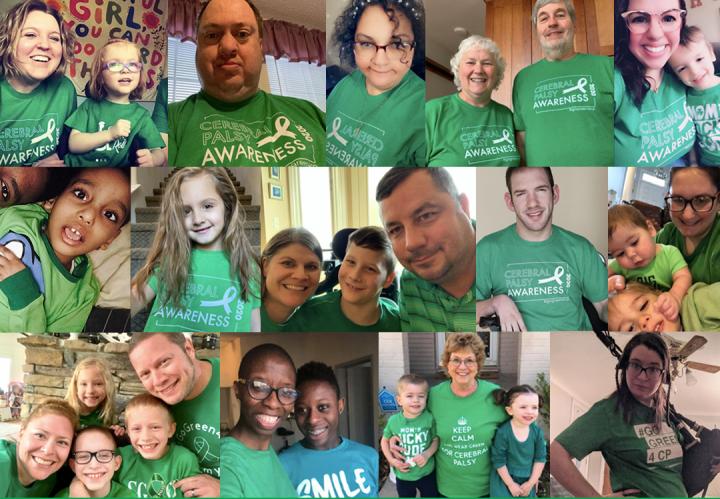
Accelerating Progress
Much remains to be done, since cerebral palsy remains significantly underfunded based on the population. We know there are real breakthroughs that will transform lives and families. Research funding is required to realize those possibilities that will lead to reduction in the numbers of people with cerebral palsy, the lessening of severity, improved quality of healthcare and life across the lifespan, and cures for many types of cerebral palsy that we know are possible.
Our growing advocacy efforts have generated much more dialogue and action about the critical public health need to invest much more research into the prevention, detection, treatment and eventual cure(s) of many types of cerebral palsy - bringing cerebral palsy funding investment in line with most other lifelong disorders. This shift in language and perspective ultimately has influenced policy changes and increased awareness that more needs to be done and can be done to transform cerebral palsy care and improve outcomes. We are raising the bar for our goals and what we know can be accomplished to transform lives. The cerebral palsy community deserves nothing less.
Through significantly more cerebral palsy research investment, we are on the brink of unprecedented breakthroughs in treatment, prevention, detection, and potential cures of many kinds of cerebral palsy. The opportunity to create change is before us right now, and together, we can change the future of cerebral palsy. Join us.

